DENSITY TEST (DIN 4698) DIN 53515
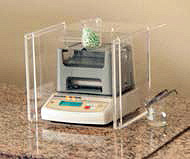
Density is the mass of unit volume of the rubber at a specified temperature. lt is expressed in megagrams per cubic meter (Mg/m3).
MOONEY VISCOSITY (TS 2009-1 ISO 289-1 / 2)
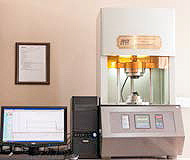
Mooney viscosity is a parameter measured to determine the flow and plasticity properties of elastomers, and the viscosity of rubber compounds.
RHEOMETER (TS 8969) ASTM D 5289- DIN 53529-3
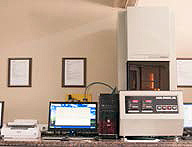
A rheometer is a device that evaluates the vulcanizing characteristics of the prepared rubber compound and ensures batch-to-batch consistency in properties.
HARDNESS (TS ISO 7619-1) ASTM D 2240 – DIN 53505
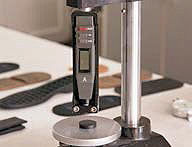
It is a test method that measures the hardness of elastomers according to the shore A scale. The test method can be described as the application of force of the test needle to the material under specified conditions.
TENSILE STRENGTH (TS ISO 37) ASTM D 412 – DIN 53504 –
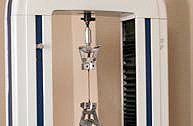
The plate prepared for BREAK and ELONGATION test is clamped between the jaws of the extensometer, and then is pulled until it breaks, in order to determine its resistance to elongation.
CARBON BLACK DISPERSION (ISO 11345)
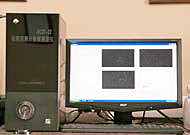
Every material added to the rubber compound is of specific importance. This test is performed to evaluate the uniformity of carbon black distribution in the rubber.
Compounds with unsuitable filler dispersion have direct negative effects on the final product.
Compounds with unsuitable filler dispersion have direct negative effects on the final product.
TEARING PROPERTIES (DIN 4698) DIN 53515
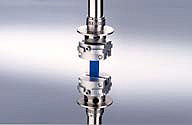
The tearing strength is determined, as the ratio of the maximum force required for the tear of a specimen to the thickness.
ADHESION TESTS (TS ISO 813)
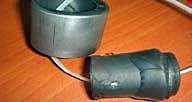
They show the adhesive strength of the bond created through vulcanization between rubber compounds and a rigid substrate (such as metal, plastic, etc.).
COMBUSTION (FLAME RESISTANCE) (DIN 4102) UL 94 – ASTM D 635
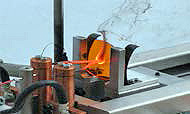
The test method is based on determining the burning rate of the rubbers exposed to flame in a specific set-up (angle, duration, position, etc.).
AGING AT HIGH TEMPERATURE (TS ISO 188) ASTM D 573
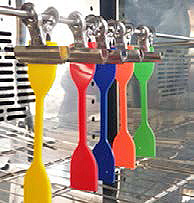
It is intended to determine the extent of thermal degradation that occurs on the mechanical and physical properties of rubber compounds exposed to thermal aging at 10 to 300°C for a certain period of time.
AGING AT LOW TEMPERATURE (TS 4709)
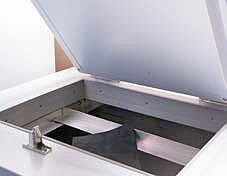
It is intended to determine the extent of degradation that occurs on the mechanical and physical properties of rubber compounds exposed to cooling process at -50°C to 0°C for a certain period of time.
ELASTICITY (TS 9568)
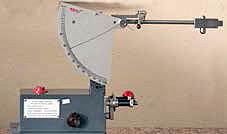
The elasticity of a material is defined as its ability to return to its original shape and volume after the load applied to it is lifted. ELASTICITY (R): Elasticity is calculated by the ratio of tensile stress to the tensile strain. This ratio is known as the elastic modulus.
AGING IN LIQUIDS (TS ISO 1817)
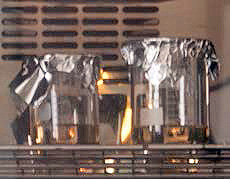
It is intended to determine the extent of degradation that occurs on the mechanical and physical properties of rubber compounds exposed to aging in liquids such as oil and water at certain temperatures for a certain period of time.
DETERMINATION OF CRYSTALIZATION EFFECTS UNDER COMPRESSION (TS 8785 – ISO 6471)
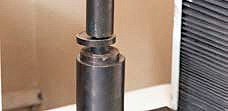
The test method is intended for the determination of the tendency of vulcanized rubbers to crystallize under compression.
DETERMINATION OF ASH CONTENT (TS 336 ISO 247 Met.A)
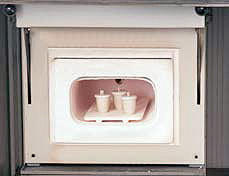
It is intended for the determination of the ash content of elastomers. Elastomers are burned at temperatures between 850°C and 1000°C to determine the ratios of organic and inorganic matters. It is one the effective techniques used for the determination of dirt and filler content of rubber compounds.
ABRASION RESISTANCE (DIN 53516)
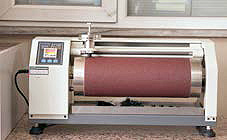
This test is intended for the determination of the abrasion resistance of elastomers subjected to abrasive wear under a predetermined contact pressure.
Laboratory
